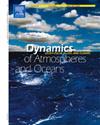气候变化对阿曼湾热分层的影响
IF 2
4区 地球科学
Q2 GEOCHEMISTRY & GEOPHYSICS
引用次数: 0
摘要
水温和热分层对海洋环境、生态系统和水循环模式具有根本性的影响。海洋生态系统通常对热变化高度敏感。全球变暖可以从根本上改变海洋温度场和热分层(Cheng, 2019)(Cheng, 2019)。因此,研究气候变化对海洋热特性的影响至关重要。利用数值模拟和3种代表性浓度路径(Representative Concentration Pathway, RCP)情景,研究了全球变暖对阿曼湾海表温度和垂直热结构的影响。来自ERA5和CORDEX模式的大气数据分别用于最近的过去(1980-2000)和未来(2080-2100)模式。结果表明,在未来气候中,阿曼湾上部1000 m的温度将升高。夏季,RCP为2.6、4.5和8.5时,地表混合层的温度增量分别为+ 1.9、+ 2.5和+ 3.4°C。温跃层以下的增温幅度小于地表混合层。冬季,RCP为2.6、4.5和8.5时,地表混合层未来增温分别为+ 1.2、+ 1.6和+ 2°C。结果表明,未来夏季温跃层较强,RCP 2.6、4.5和8.5的温度梯度分别为0.055、0.057和0.06 °C/m,可显著降低低层溶解氧浓度。这项研究提供的见解可以帮助制定适应性策略,以管理和减轻全球变暖对阿曼湾的有害影响。本文章由计算机程序翻译,如有差异,请以英文原文为准。
The effects of climate change on the thermal stratification of the Gulf of Oman
Water temperature and thermal stratification have fundamental effects on marine environments, ecosystems, and water circulation patterns. Marine ecosystems are generally highly sensitive to thermal changes. Global warming can fundamentally alter oceanic temperature fields and thermal stratification(Cheng, 2019)(Cheng, 2019). Therefore, studying the effects of climate change on the thermal characteristics of the oceans and seas is vital. Using numerical modeling, and three Representative Concentration Pathway (RCP) scenarios, we studied the effects of global warming on the sea surface temperature and vertical thermal structure of the Gulf of Oman. Atmospheric data from the ERA5 and CORDEX models were used for recent past (1980–2000) and future (2080–2100) modeling, respectively. Results indicated that, in the future climate, the temperature across the upper 1000 m of the Gulf of Oman will increase. In summer, temperature increments in the surface mixed layer were estimated at + 1.9, + 2.5, and + 3.4°C for RCP 2.6, 4.5, and 8.5, respectively. Below the thermocline, the temperature increments were less than the ones in the surface mixed layer. In winter, future temperature increments in the surface mixed layer were + 1.2, + 1.6, and + 2°C for RCP 2.6, 4.5, and 8.5, respectively. The results indicated a stronger summer thermocline in the future with temperature gradients of 0.055, 0.057, and 0.06 °C/m in the RCP 2.6, 4.5, and 8.5, respectively, which could significantly reduce dissolved oxygen concentration in the lower layers. This study provides insights that can help develop adaptable strategies to manage and mitigate the harmful impacts of global warming on the Gulf of Oman.
求助全文
通过发布文献求助,成功后即可免费获取论文全文。
去求助
来源期刊

Dynamics of Atmospheres and Oceans
地学-地球化学与地球物理
CiteScore
3.10
自引率
5.90%
发文量
43
审稿时长
>12 weeks
期刊介绍:
Dynamics of Atmospheres and Oceans is an international journal for research related to the dynamical and physical processes governing atmospheres, oceans and climate.
Authors are invited to submit articles, short contributions or scholarly reviews in the following areas:
•Dynamic meteorology
•Physical oceanography
•Geophysical fluid dynamics
•Climate variability and climate change
•Atmosphere-ocean-biosphere-cryosphere interactions
•Prediction and predictability
•Scale interactions
Papers of theoretical, computational, experimental and observational investigations are invited, particularly those that explore the fundamental nature - or bring together the interdisciplinary and multidisciplinary aspects - of dynamical and physical processes at all scales. Papers that explore air-sea interactions and the coupling between atmospheres, oceans, and other components of the climate system are particularly welcome.
 求助内容:
求助内容: 应助结果提醒方式:
应助结果提醒方式:


